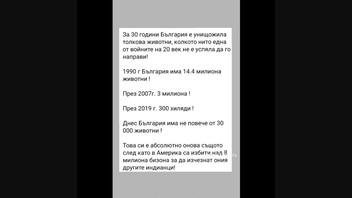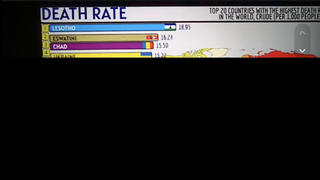
Did Bulgaria destroy its livestock sector, leaving it with no more than 30,000 farm animals in the country? No, that's not true: The number of farm animals amounts to millions, according to the latest official statistics from the Bulgarian Ministry of Agriculture and the Bulgarian National Statistical Institute (NSI).
The claim appeared in a video on TikTok (archived here) published by @asenmanev2001 on November 29, 2023. The caption (translated from Bulgarian to English by Lead Stories staff) read:
In 30 years, Bulgaria has destroyed as much of its livestock as none of the wars of the 20th century managed to do! In 1990, Bulgaria had 14.4 million livestock! In 2007, 3 million!
In 2019, 300,000! Today, Bulgaria has no more than 30,000 livestock!
This is no different than when 8 million bison were killed in America to make the indigenous people disappear!
This is what the post looked like on TikTok at the time of writing:

(Source: TikTok screenshot taken on Tue Dec 12 07:34:21 2023 UTC)
Part of the claim can be traced to an article dated January 15, 2020, published on a Bulgarian agriculture website, that included the sentence (as translated) "In 30 years, Bulgaria has destroyed as much of its livestock as none of the wars of the 20th century managed to do." The video copied that sentence, along with data claims for 1990 and 2007. However, the article does not include the claim for 2019 and beyond.
According to official statistics published by the Bulgarian Ministry of Agriculture in May 2023, document No. 426, for the period up to November 1, 2022, shows the number of livestock far exceeds 30,000. For example, the number of cattle is 559,000, dairy cows 198,000, other cows 163,000, pigs over 600,000 and the number of sheep is nearly 1.1 million. The total number of all livestock exceeds millions.
Another official Bulgarian document, with statistical data for 2022 from the National Statistical Institute (NSI) regarding the number of livestock for the years 2018-21, does not show a significant difference in the figures across various animal sectors, and it does not show substantial fluctuations during this period in different years. The number of animals, found on page 246 of the document, is expressed in millions annually throughout this period.


















